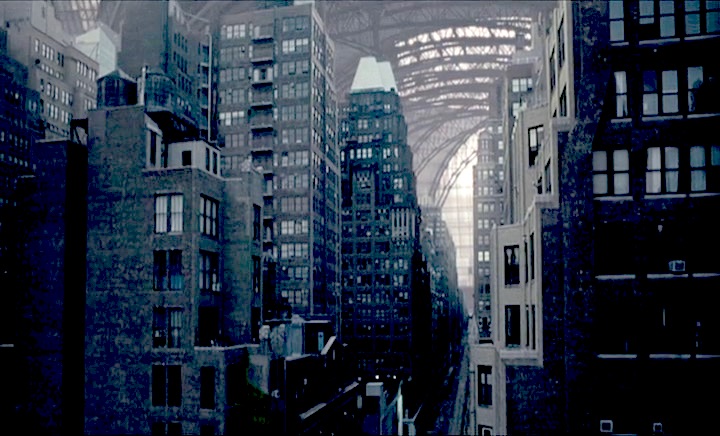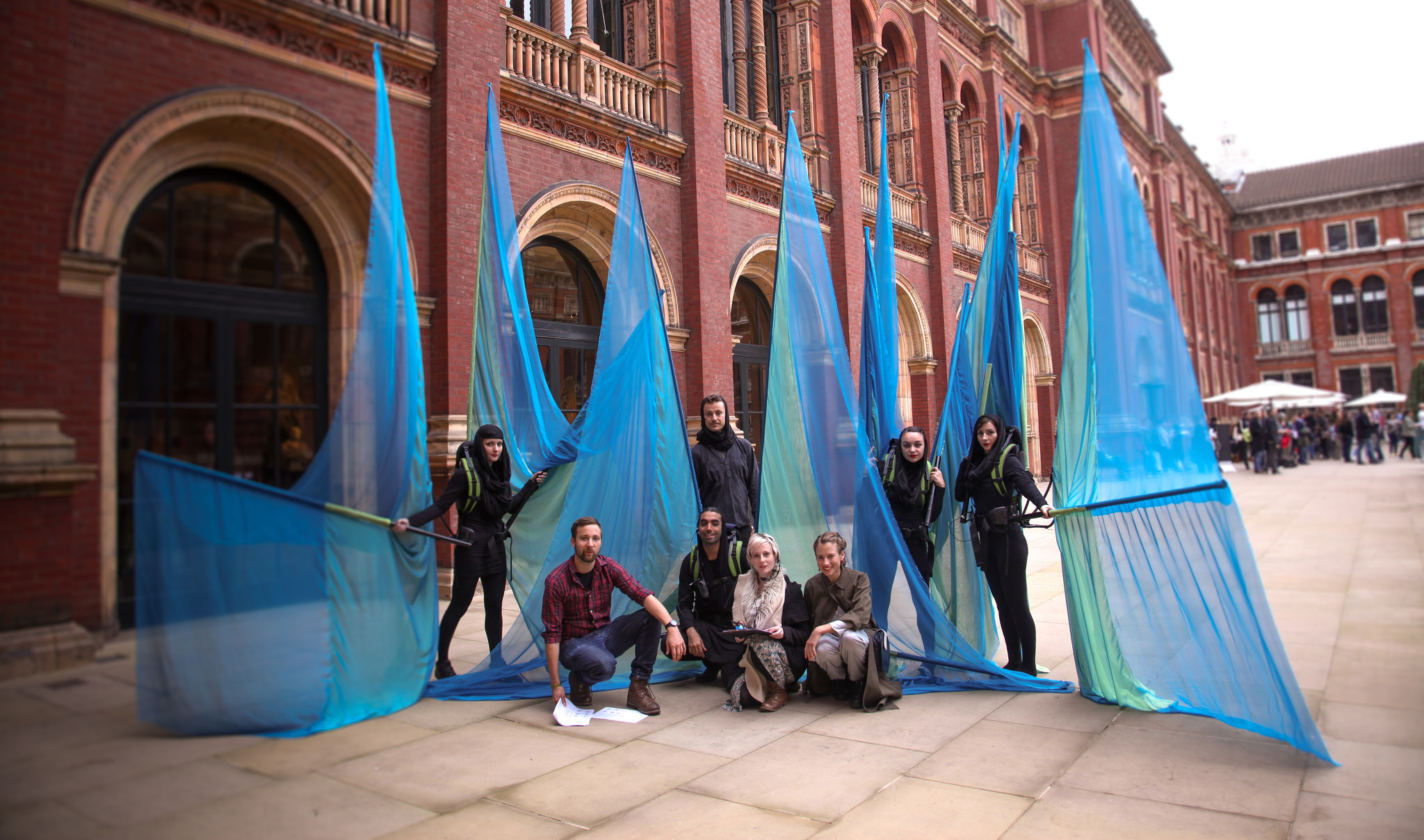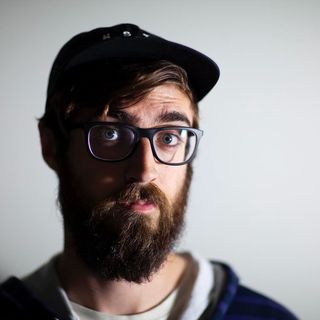Table of contents

Still from Synechdoche, New York, dir. Charlie Kaufman, 2008. © Copyright Sony Pictures Classics.
Course overview
World-building is a valuable tool in art and design. The ability to immerse an audience in a complete world is crucial to the framing of TV shows and movies; corporations, nations, political parties, theatrical productions, and futurists all engage in ‘world-building’. What can artists and designers learn from world-building to enhance and augment their own practice?
This elective module encourages students to explore the possibilities of world-building in their own practice through a series of structured activities. The course is practice-led, and taught via a series of open-access podcasts, and classes, we will gather to discuss ideas and work. The course encourages students to build on skills they already have, enhancing their current practice and projects by creating worlds to embed them in.
We will be using philosopher Maurizio Ferraris’ concept of social objects to create artefacts, and imagined social and individual memories. We will use theory and techniques from numerous places – theatre, counterfactuals, psychological operations, fiction, television and film production, propaganda, situationism – as well as testing new methods for world-building. By the end of the course, students will have designed maquettes and small sets, artefacts from imagined worlds, presented and re-framed aspects of their own work, and produced a short audio production which blends their everyday practice or life with a fantastical version of it. The course is methods-focused, but will also provide supplementary reading materials for students who wish to integrate these methods into their practice.
Please note that the scope of the course, the mode of teaching, and the expected outputs have changed since the beginning of the course in reaction to the global COVID-19 crisis. MIVC is based in the Netherlands, and our school’s building has been closed since mid-March 2020. The upside of this is that the mode of disseminating our work has become a podcast, which anyone in the world can listen to for free, and where we will disseminate our students’ work at the end of the course.
The course will be performed in public: the syllabus and assignments will be made open access at parallel.olliepalmer.com, as well as in the course podcast – which is where students from MIVC will share their work at the end of the course.
Course guidelines
Teaching and participation
A new podcast episode, with 15-20 minutes’ writing and world-building exercises, is released every weekday during term-time. A longer podcast is released once a week, with issues that will be discussed in class.
Please note there are changes due to the coronavirus crisis
The total time allocated for a 3EC course is 84 hours. This means that in addition to attending classes, you are also expected to carry out around 4-5 hours’ work on your assignments outside of class time.
The class is taught primarily via podcast, which enables you to work in your own time. We also meet online once a week on Fridays between 13:50-17:15 CET (check with your time zone here). These classes are a place to discuss the work you’ve done this week, set collective agendas and goals, and have tutorials. In normal circumstances, failure to attend 2 classes or the assessment at the end of the course is grounds for failing the course (with the exception of emergencies). However, since shifting to online tuition for this course, I realise that not everyone has equal access to technology, bandwidth, and may have other commitments. Consequently, no penalty will be imposed if you can’t attend classes. Please do let me know if you need extra tuition or help – just email om.palmer@avans.nl.
There will be activities, conversations, presentations, feedback, and group work in class. Please try to engage with these activities as fully as possible. If for any reason you feel uncomfortable with any of these activities please let your tutor know.
Timetable
| Date | Week | Class | Week type | Subject | Staff |
|---|---|---|---|---|---|
| 26 Feb 2021 | 00 | Yes | Introduction | Introduction | Ollie + Nick |
| 05 Mar 2021 | 01 | Yes | Reflection week | Building worlds | Nick |
| 12 Mar 2021 | 02 | Yes | Action week | Objects and spaces | Ollie |
| 19 Mar 2021 | 03 | Yes | Reflection week | Counterfactuals | Nick |
| 26 Mar 2021 | 04 | Yes | Action week | Audio recording; examination of surrounding environments; social objects | Ollie |
| 02 Apr 2021 | No | Holiday (Good Friday) | |||
| 09 Apr 2021 | 05 | Yes | Reflection week | Audio techniques | Nick |
| 16 Apr 2021 | 06 | Yes | Action week | Audio recording | Ollie |
| 23 Apr 2021 | 07 | Yes | Reflection week | Framing your practice | Nick |
| 30 Apr 2021 | 08 | Yes | Action week | Creation of stories | Ollie |
| 07 May 2021 | No | Holiday (May break) | |||
| 14 May 2021 | No | Holiday (Building closed) | |||
| 21 May 2021 | 09 | Yes | Assessment (all day) | Ollie + external assessor |
Marking
You will be graded on three elements:
Narrative audio work
Narrative audio work: 60% of final grade
- Make a narrative audio work of 5-12 minutes’ length which includes elements of:
- your real, daily life and/or artistic practice
- a parallel, fictional world of your choosing
- The role of this exercise is to enact the learnings of this course – the process of world-building and narrative writing – in one concise audio work.
- The audio work can be real and/or fictionalised. It can use autobiography, fiction, found sounds, your own foley – whatever helps you to take the listener on a journey between two worlds.
- It should carefully consider the emotional journey you wish for a listener to go through, using principles of ‘framing’ we have discussed in class.
Overview of process
Overview of process to reach narrative audio work: 20% of final grade
- This work should help an audience ‘frame’ your work more.
- Present a 2-4 minute overview of the narrative audio work, in audio/visual format. This can be a presentation, a pre-recorded video or audio file, a PDF, or another format of your choosing.
- The role of this activity is to enable you to describe your process, and the work that you have put into your narrative audio work. It lets you add value to the work you have submitted through explanation of the elements which might otherwise be hidden
- You can play elements of your narrative audio work and describe what they are and how they are made, or your thought process
- This overview could be presented in several different ways, depending on your own preference, for example:
- An introduction to the work, like curators’ introductions to a gallery show
- A ‘behind the scenes’ expose of your working process
- A series of working notes
- Footnotes to subjects or themes in your work
- Et cetera
- Use this presentation to add value to the narrative audio work, highlighting elements that you want listeners to hear.
Overview of creative processes
Overview of creative processes from the course: 20% of final grade
- Choose a small selection of the exercises you have completed in class, or through the class podcast. Present the exercises, and what you personally learnt from them, as if you are presenting to an audience who have never heard of them before.
- The presentation should be 2-4 minutes long, and can use any audiovisual media you see fit, e.g. a presentation, a pre-recorded video or audio file, a PDF, or another format of your choosing.
- This assessment allows you to demonstrate your understanding of activities within the course, and provides a place to reflect on your own personal practice.
Tutors
This course is taught by Ollie Palmer and Nick Bromann.
Ollie Palmer
Ollie Palmer is an artist, designer and film-maker whose work critically questions control systems and contemporary use of technology, and takes place across installations, films and performances. Projects often include collaborations with scientists, dancers, and other people outside of his own discipline. From 2015-16 he was Pavillon artist-in-residence at the Palais de Tokyo, Paris, and his work has been shown internationally (V&A Museum, Seoul Museum of Art, Opera Garnier de Paris). He holds a PhD by Design from the Bartlett School of Architecture entitled ‘Scripted performances: designing performative architectures through digital and absurd machines’ (download pdf), and is alumni of the Bartlett’s Interactive Architecture Lab. He has taught at the School of the Art Institute Chicago, the Bartlett, TU Delft Architecture, and AKV St Joost, where he is Core Tutor on the Situated Design masters course. Alongside other projects, he is currently working on a FilmFonds NL-funded immersive reality project entitled All the Worlds.
Contact details
om.palmer@avans.nl • www.olliepalmer.com • @_olliepalmer

Image: Ollie Palmer and performance/production team at Nybble installation, V&A Museum, 2013.
Nick Bromann
Nick Bromann is a second-year Situated Design student at MIVC. Born in the USA, and currently residing in the Netherlands, his background is in graphic design and visual arts, and his own practice asks viewers to reflect on their surroundings through wandering and image-making. His work can be found on Instagram at bromann.nick.

Image: bromann.nick on Instagram.
Feedback
This course is designed for you! If there is anything that is unclear, anything that could be better organised, or you have any ideas you think might make the course or your experience better, please just tell me.
Website + podcast
Open access
The contents of this course are open access. Please feel free to take and adapt any of the learning materials, try the exercises, start teaching your own course, etc.
Whilst the site and course are open access, there are copyrighted materials on the site. This includes students’ work, and images from relevant films, etc. Copyrighted material is clearly marked as such: please respect the original copyright holder. If you like the look of something on the site (e.g. a film, podcast, book, etc), please support its creator! :)
Open source
The website this course runs on is open source; you can find the whole code-base on Github. The website is built with Jekyll, and uses a slightly modified version of Just the Docs. The site uses ‘Monofur for Powerline’ by Tobias B Koehler for its titles - font licence and description can be found over here. Please use, adapt, and modify the site as you see fit. More information about how it’s all put together, and how you can copy it to your own site, on GitHub.